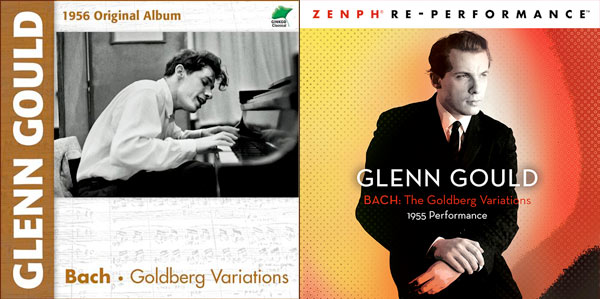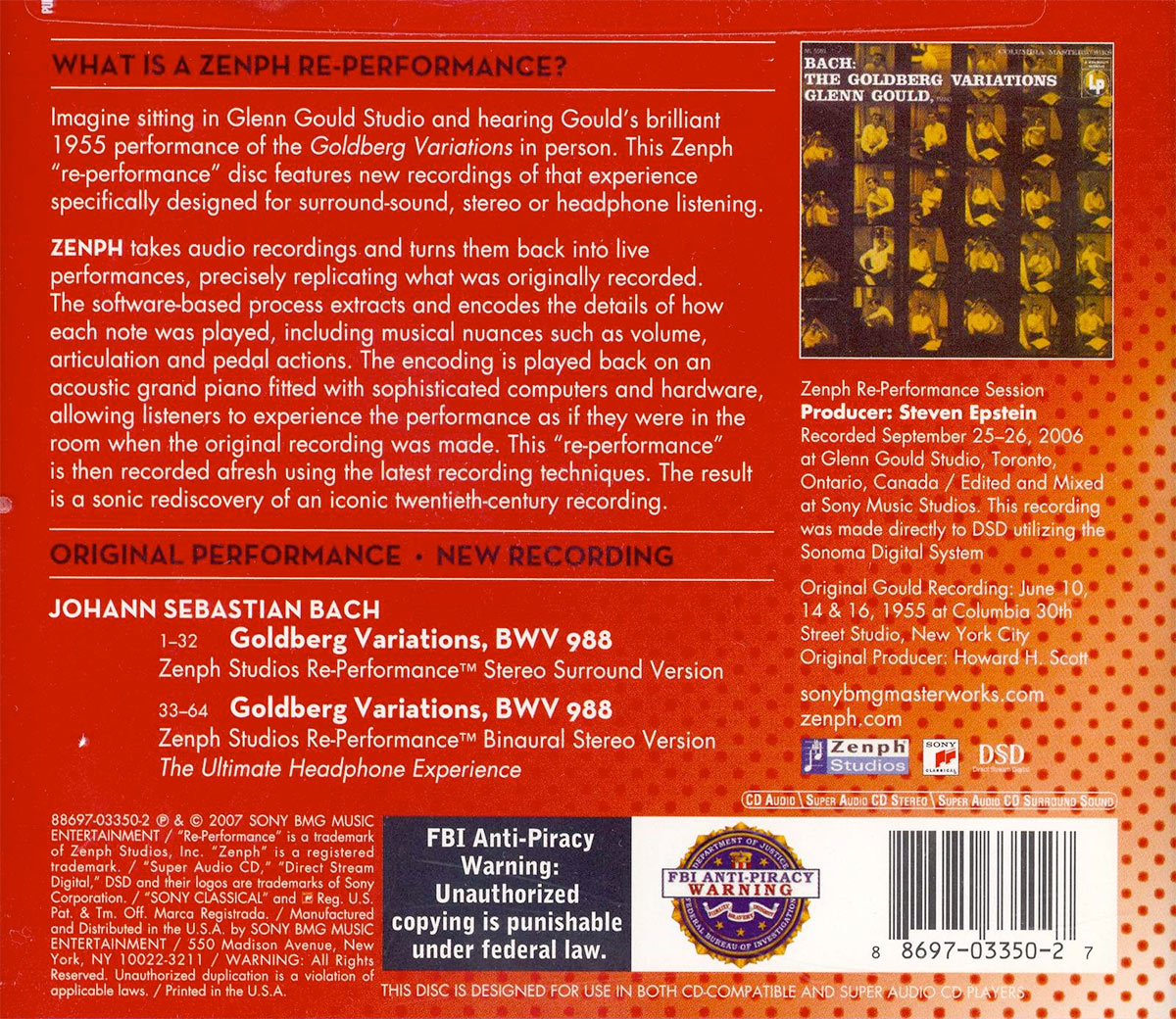Re-Performance: Resurrecting the Past
As I sat in my university office this morning, I bumped around a few websites after doing a search on high-resolution audio. It’s still rather disconcerting that so many writers are hanging on to the HRA company line and writing pieces that are confusing at the best and outright incorrect at worst.
However, I did find an interesting comment on the topic of restoration and re-releasing older masters. The writer stated, “the only way to get a real high-resolution audio recording of an older master is to have mechanically-played instruments recreate an original performance and re-record what they produce”. This is brilliant…but of course, impossible. Or is it?
I can tell you that it’s already been done (at least with piano)…and with tremendous success.
About Zenph Sound Innovations
Zenph creates revolutionary technology that opens new possibilities for music listening and interaction. The company has developed a fundamentally new method of encoding music as performance data rather than audio. This performance data is easily transformed in a number of ways, enabling users of Zenph products – professionals, hobbyists, students, and listeners – to participate in compelling, interactive musical experiences. The company’s re-performance process was called “a technological miracle” by The Wall Street Journal and one of the “Best Ideas of the Year” by The New York Times Magazine. Zenph’s recordings have received multiple GRAMMY nominations, and its Rachmaninoff Plays Rachmaninoff album on Sony Masterworks was described by the editor of Stereophile Magazine as “perhaps the finest piano recording I have heard.”
Mechanical musicians? How about a player piano…but not just any player piano but one that has practically infinite dynamic resolution and control over pacing and tempo. After all, piano are made up of a bunch of switches (the keys) and three pedals right? How hard could it be to automate them? Actually, not that hard at all. We’ve had player pianos…even expression pianos for well over a hundred years!
The innovation that Zenph added was to consider a recorded piece of music not as acoustic sounds but as data. For those of you involved in synthesizers or computer music this might sound familiar. It’s called MIDI (Musical Instrument Digital Interface) and it records performances as data rather than the acoustic energy coming from a soundboard or vibrating string. When a pianist hits a middle “C” on the keyboard, a set of data emerges from the mechanism and is delivered to a sound generator or a computer that records it. The information includes the note number, the intensity level (how fast the key was depressed) and the timing of the key press and release.
Figure 1 – The back of the Zenph Innovations re-performance of Glenn Gould’s “Goldberg Variations” [Click to enlarge]
That’s really all you need to know. So Zenph came along and analyzed Glenn Gould’s debut 1955 recording of Bach’s Goldberg Variations. They figured out the precise timing and the dynamic level of each note, the use of the pedals and the balance of each vertical sonority from the original recording. This is their performance data. And then they sent the performance data back to a computerized version of a player piano using an ultra high-resolution form of MIDI. Presto! When they hit play, the sound coming from the piano is “an exact replication” of the original performance buy Glenn Gould. This is the “new” performance that is needed to re-record in high-resolution audio.
It’s brilliant, really. Not only can they (in collaboration with Sony Masterworks) capture the “re-performance” with state-of-the-art equipment (although being SONY they released it using DSD 64) and issue it on CD and in 5.1 surround. The Glenn Gould was given all sorts of awards and put Zenph Innovations on the map.
I’m a friend of Dr. John Walker, the guy that came up with this approach. It turns out the copyrights can be refreshed and the recording of the Bach is heard without Glenn’s squeaky piano bench, singing and the occasional subway train that is heard during the sessions. I was so impressed that I make available the Zenph productions on the iTrax website. You should check out the “Rachmaninoff plays Rachmaninoff” in 5.1 surround.
But how far can this idea go? The last time I spoke to John, they had raised some serioius funds and were working on building a mechanical acoustic bass and a set of drums. Then they fell off my radar. When I looked at their website today, everything seems a few years out of date. I don’t think John is involved anymore. But the original idea was brilliant and as far as making new piano recordings of older performances, it was very successful.
This isn’t a way forward for most classic recordings…but it did amaze a lot of people with Gould, Rachmaninoff and Peterson.



Let the dead rest in peace with their recorded legacy intact. This is musical grave robbing.
See today’s post.
Hi Mark,
I have been reading your newsletter for some weeks now. Many of the things you write about are déjà vu and I could sign them myself, others were discoveries I hadn’t been aware of.
The one about the magnificence of the Zenph re-performances however, I tend to disagree with. I have the SACDs of Gould’s Goldbergs and the Art Tatum one. As you say below, what is missing from these performances is the artist’s personality and interpretation. I play the piano myself and when I sit at a new and unknown instrument, it will take a few minutes until I “bond” with the instrument. I have to try out how the piano reacts and how I have to play it to achieve the sound I would like. A performance is a continuous feedback loop, the result of which is then committed to a recording. When the exact same hammer movments are then applied to another piano, a totally different sound and performance from the one intended will result. Michelangeli was said to be able to produce more different colours from a piano than almost any other artist. Put him in front of a Disclavier and he’d struggle – but he would adapt to it and still produce something miraculous. Not as miraculous as on his own Steinway, but still way better than a computer recreation could.
Not that I don’t find the Zenph approach fascinating (I’m an electrical engineer after all), but the result is not music to me. For me the benchmark that historical restorations (or recordings in general) have to measure up to is to transfer the soul of the music to the listener. Some do that better, others less so.
Thanks for your sharing, I appreciate it a lot.
Best regards
Rudi
Rudolf,
This is a tough one for a number of reasons…such as those that you identified in your comment. However, I think the problem that I have with it different from yours. I really do believe that everything down to the smallest detail of the original recording has been “transcribed” into the data file that John Walker’s believes is in their re-performance. If we “modified” the sound of the new re-performance to match the timbre or the original and added back the singing and squeaky stool…they two would be virtually identical. It IS the performance of Glenn Gould brought to another era. But the production of the notes from a Yamaha Disclavier isn’t enough for me.
The real question is whether we will someday have the tools to scrub all of the “issues” from the original recording…and would this include the singing or other intrusions?